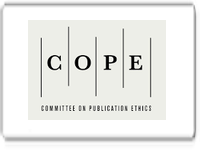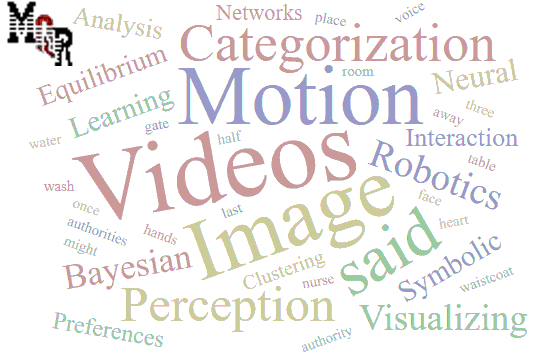Mecanismo fisiológico de la oxitocina en el comportamiento humano y las emociones. Revisión bibliográfica
DOI:
https://doi.org/10.56048/MQR20225.8.2.2024.1118-1132Palabras clave:
emociones; comportamiento; oxitocina; PRISMA; revisión sistemáticaResumen
Introducción: la oxitocina es una hormona que se encuentra conformada por 9 aminoácidos y conlleva efectos a nivel periférico central.
Objetivo: analizar el mecanismo fisiológico de la oxitocina en el comportamiento humano y las emociones
Métodos: se realizó una revisión bibliográfica de la literatura a través de diversas bases de datos, para ello fueron contempladas las directrices del método PRISMA.
Resultados: Inicialmente, fueron identificados 319 artículos, siendo seleccionados y analizados 9 publicaciones. Los artículos presentan evidencia científica del impacto positivo de la oxitocina en el comportamiento y emociones en seres humanos.
Conclusiones: la oxitocina regula el eje hipotálamo-pituitario-suprarrenal, conlleva reducción en el nivel de cortisol, activación del nervio vago, y modulación de la amígdala, corteza prefrontal y sistemas de neurotransmisores. El efecto de la oxitocina en el comportamiento humano y las emociones engloba el establecimiento de vínculos sociales, promueve el acercamiento social, influye de forma positiva en la cognición social y comportamiento social al fomentar el altruismo y la generosidad, además incrementa las interacciones sociales y favorece la autoconfianza y la estabilidad de las relaciones emocionales. Por otra parte, mejora la empatía mostrada por el individuo y la expresión de emociones, regula la respuesta ante el peligro o situaciones amenazantes y el estrés, al tiempo que los estudios demuestran resultados prometedores en la terapéutica de diversos trastornos psiquiátricos como la esquizofrenia, el autismo, la ansiedad y el estrés.
Descargas
Métricas
Cited
DOI: 10.56048![]()
Citas
Barrios, K., Orozco, D., Pérez, E., & Conde, G. (2021). Nuevas recomendaciones de la versión PRISMA 2020 para revisiones sistemáticas y metaanálisis. Acta Neurológica Colombiana, 37(2), 105-106. https://actaneurologica.com/index.php/anc/article/download/1052/407
Brockington, G., Gomes, A., Buso, M., Gomes, S., Altszyler, E., Fischer, R., ... et al. (2021). Storytelling increases oxytocin and positive emotions and decreases cortisol and pain in hospitalized children. Proc Natl Acad Sci USA, 118(22), 1-7. https://www.ncbi.nlm.nih.gov/pmc/articles/PMC8179166/
Carter, C. (2022). Oxytocin and love: Myths, metaphors and mysteries. Compr Psychoneuroendocrinol, 9, 1-10. https://www.ncbi.nlm.nih.gov/pmc/articles/PMC9216351/
Carter, C., Kenkel, W., MacLean, E., Wilson, S., Perkeybile, A., Yee, J., ... et al. (2020). Is oxytocin “nature’s medicine”? Pharmacol Rev, 72(4), 829-861. https://www.ncbi.nlm.nih.gov/pmc/articles/PMC7495339/
Donadon, M., Martin-Santos, R., & de Lima, F. (2018). The associations between oxytocin and trauma in humans: a systematic review. Front Pharmacol, 9(54), 1-16. https://www.ncbi.nlm.nih.gov/pmc/articles/PMC5838009/
Edinoff, A., Thompson, E., Merriman, C., Alvarez, M., Alpaugh, E., Cornett, E., ... et al. (2022). Oxytocin, a novel treatment for methamphetamine use disorder. Neurol Int, 14(1), 186-198. https://www.ncbi.nlm.nih.gov/pmc/articles/PMC8883935/
Egito, J., Nevat, M., Shamay-Tsoory, S., & Osório, A. (2020). Oxytocin increases the social salience of the outgroup in potential threat contexts. Hormones and Behavior, 122, 1-7. https://www.sciencedirect.com/science/article/pii/S0018506X20300593
Fan, S., Weinberg-Wolf, H., Piva, M., Dal Monte, O., & Chang, S. (2020). Combinatorial oxytocin neuropharmacology in social cognition. Trends in Cognitive Sciences, 24(1), 8-12.
Florea, T., Palimariciuc, M., Cristofor, A., Dobrin, I., Chiriță, R., Bîrsan, M., ... et al. (2022). Oxytocin: narrative expert review of current perspectives on the relationship with other neurotransmitters and the impact on the main psychiatric disorders. Medicina, 58(7), 1-20. https://www.ncbi.nlm.nih.gov/pmc/articles/PMC9318841/
García, F., & Fatauros, C. (2022). En defensa de un diálogo entre las neurociencias y las éticas normativas: ¿Mejoramiento moral mediante oxitocina en aerosol? RHV An International Journal of Philosophy, 20, 57-75. https://ri.conicet.gov.ar/bitstream/handle/11336/213610/CONICET_Digital_Nro.73739e59-5897-4e49-af1c-bc0efd681e4a_B.pdf?sequence=2&isAllowed=y
Gedeon, T., Parry, J., & Völlm, B. (2019). The role of oxytocin in antisocial personality disorders: A systematic review of the literature. Front Psychiatry, 10(76), 1-15. https://www.ncbi.nlm.nih.gov/pmc/articles/PMC6400857/
Ito, E., Shima, R., & Yoshioka, T. (2019). A novel role of oxytocin: Oxytocin-induced well-being in humans. Biophys Physicobiol, 16, 132-139. https://www.ncbi.nlm.nih.gov/pmc/articles/PMC6784812/
Jurek, B., & Meyer, M. (2020). Anxiolytic and anxiogenic? How the transcription factor MEF2 might explain the manifold behavioral effects of oxytocin. Front Endocrinol (Lausanne), 11(186), 1-7. https://www.ncbi.nlm.nih.gov/pmc/articles/PMC7156634/
Kenkel, W., Perkeybile, A., Yee, J., Pournajafi-Nazarloo, H., Lillard, T., Ferguson, E., ... et al. (2019). Behavioral and epigenetic consequences of oxytocin treatment at birth. Sci Adv, 5(5), 1-10. https://www.ncbi.nlm.nih.gov/pmc/articles/PMC6494504/
Kerem, L., & Lawson, E. (2021). The effects of oxytocin on appetite regulation, food intake and metabolism in humans. Int J Mol Sci, 22, 1-32. https://www.ncbi.nlm.nih.gov/pmc/articles/PMC8306733/
Lawson, E., Olszewski, P., Weller, A., & Blevins, J. (2020). The role of oxytocin in regulation of appetitive behaviour, body weight and glucose homeostasis. J Neuroendocrinol, 32(4), 1-37. https://www.ncbi.nlm.nih.gov/pmc/articles/PMC7186135/
Liu, S., Huang, R., Li, A., Yu, S., Yao, S., Xu, J., ... et al. (2023). The role of the oxytocin system in the resilience of patients with breast cancer. Front Oncol, 13, 1-14. https://www.frontiersin.org/journals/oncology/articles/10.3389/fonc.2023.1187477/full
Moberg, K., Handlin, L., Kendall-Tackett, K., & Petersson, M. (2019). Oxytocin is a principal hormone that exerts part of its effects by active fragments. Medical Hypotheses, 133. https://www.sciencedirect.com/science/article/pii/S0306987719306784
Olivera, V., & Dabrowska, J. (2020). Oxytocin promotes accurate fear discrimination and adaptive defensive behaviors. Front Neurosci, 14, 1-12. https://www.ncbi.nlm.nih.gov/pmc/articles/PMC7538630/
Peled-Avron, L., Abu-Akel, A., & Shamay-Tsoory, S. (2020). Exogenous effects of oxytocin in five psychiatric disorders: a systematic review, meta-analyses and a personalized approach through the lens of the social salience hypothesis. Neuroscience & Biobehavioral Reviews, 114, 70-95.
Perrotta, G. (2020). Oxytocin and the role of “regulator of emotions”: Definition, neurobiochemical and clinical contexts, practical applications and contraindications. J Clin Res Ophthalmol, 6(1), 001-005. https://www.researchgate.net/profile/Giulio-Perrotta/publication/340919124_Oxytocin_and_the_role_of_regulator_of_emotions_Definition_neurobiochemical_and_clinical_contexts_practical_applications_and_contraindications/links/5f7417aba6fdcc0086485840/Oxytocin-and-the-role-of-regulator-of-emotions-Definition-neurobiochemical-and-clinical-contexts-practical-applications-and-contraindications.pdf
Phan, P., Alhassen, L., Argelagos, A., Alhassen, W., Vachirakorntong, B., Lin, Z., ... et al. (2020). Mating and parenting experiences sculpture mood-modulating effects of oxytocin-MCH signaling. Scientific reports, 10(1), 1-14. https://www.ncbi.nlm.nih.gov/pmc/articles/PMC7423941/
Rethlefsen, M., Kirtley, S., Waffenschmidt, S., Ayala, A., Moher, D., Page, M., ... et al. (2021). PRISMA-S: an extension to the PRISMA statement for reporting literature searches in systematic reviews. Systematic reviews, 10(39). https://link.springer.com/article/10.1186/s13643-020-01542-z
Santamaría, R. (2017). Programa de habilidades en lectura crítica español (CASPe). NefroPlus, 9(1), 100-101. https://www.revistanefrologia.com/es-programa-habilidades-lectura-critica-espanol-articulo-X1888970017612483#:~:text=CASPe%20(Critical%20Appraisal%20Skills%20Programme,cr%C3%ADtica%20de%20la%20evidencia%20cl%C3%ADnica%E2%80%9D.
Serón, T., & Osorio, J. (2021). Rol de la oxitocina en patología psiquiátrica. Rev Chil Neuro-Psiquiat, 59(3), 225-233. https://www.scielo.cl/pdf/rchnp/v59n3/0717-9227-rchnp-59-03-0225.pdf
Takahashi, T. (2021). Sensory stimulation of oxytocin release is associated with stress management and maternal care. Front Psychol, 11, 1-6. https://www.ncbi.nlm.nih.gov/pmc/articles/PMC7848088/
Tang, A., Thomas, S., & Larkin, T. (2019). Cortisol, oxytocin, and quality of life in major depressive disorder. Quality of Life Research, 28, 2919-2928. https://www.proquest.com/openview/811eef10c685b2e78935499a8af4fe32/1?pq-origsite=gscholar&cbl=326329
Tolomeo, S., Chiao, B., Lei, Z., Chew, S., & Ebstein, R. (2020). A novel role of CD38 and oxytocin as tandem molecular moderators of human social behavior. Neuroscience & Biobehavioral Reviews, 115, 251-272. https://discovery.dundee.ac.uk/ws/files/49073166/1_s2.0_S0149763419310656_main.pdf
Ueda, Y. (2023). Oxytocin: An expansive review of its mechanisms, functions, and therapeutic potential. World Journal of Advanced Research and Reviews, 19(1), 1264-1272. https://wjarr.com/sites/default/files/WJARR-2023-1499.pdf
Vargas, M. (2019). Relación biológica-social, en el control de las emociones. The Journal of the Latin American Socio-cultural Studies of Sport (ALESDE), 10(1), 101-108. https://revistas.ufpr.br/alesde/article/download/67593/38847
Yue, G. (2023). Regulation of Oxytocin on Empathy and Its Neural Mechanism. IntechOpen. https://www.intechopen.com/online-first/88032
Zhu, R., Liu, C., Li, T., Xu, Z., Fung, B., Feng, C., ... et al. (2019). Intranasal oxytocin reduces reactive aggression in men but not in women: A computational approach. Psychoneuroendocrinology, 108, 172-181. http://liuchaolab.bnu.edu.cn/wp-content/uploads/2019/08/2019paper5.pdf
Publicado
Cómo citar
Número
Sección
Categorías
Licencia

Esta obra está bajo una licencia internacional Creative Commons Atribución 4.0.
Los autores se comprometen a respetar la información académica de otros autores, y a ceder los derechos de autor a la Revista MQRInvestigar, para que el artículo pueda ser editado, publicado y distribuido. El contenido de los artículos científicos y de las publicaciones que aparecen en la revista es responsabilidad exclusiva de sus autores. La distribución de los artículos publicados se realiza bajo una licencia 
































































































